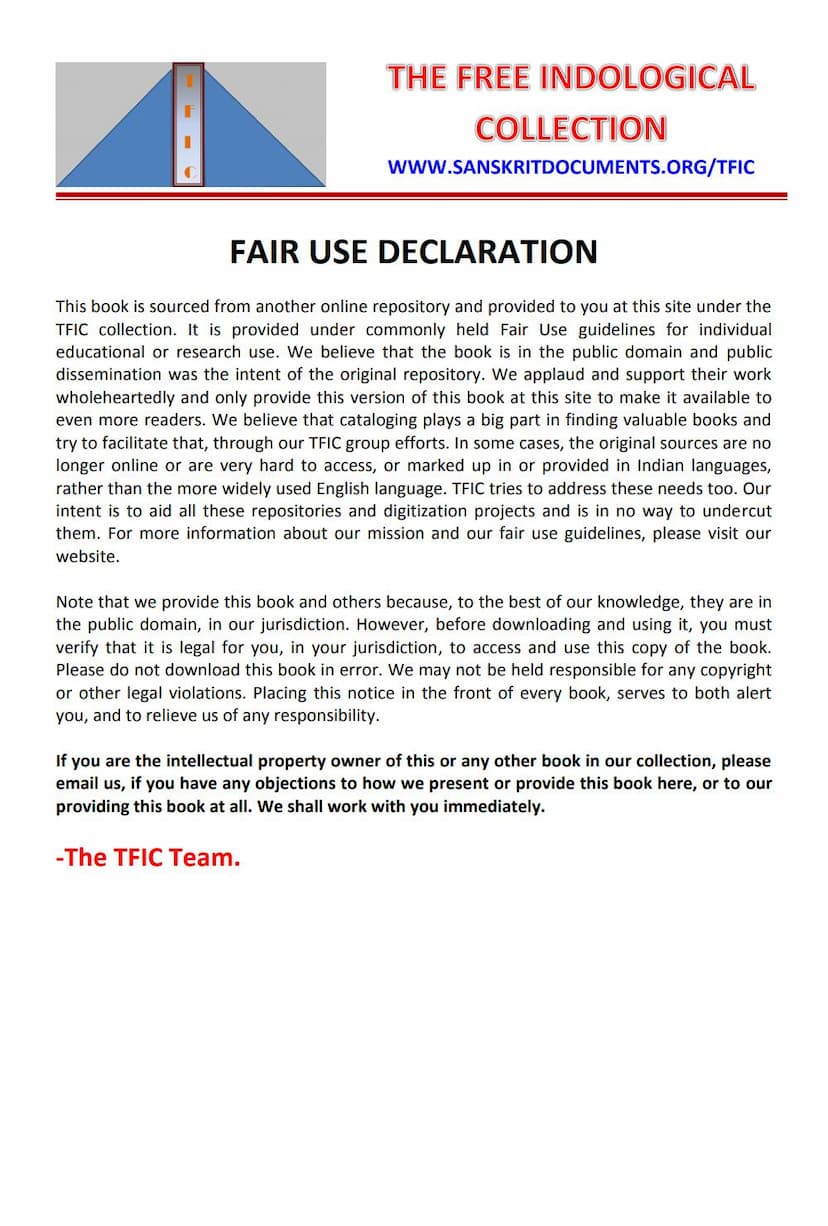Jain Shila Lekh Sangraha 02
Added to library: September 2, 2025

Summary
Here's a summary of the provided Jain text, "Jain Shila Lekh Sangraha 02," authored by M.A. Shastracharya:
This volume, the second part of a collection of Jain inscriptions, is a significant compilation of epigraphical records related to Jainism. The preface highlights the crucial role of ancient inscriptions in constructing the history of Jainism and its literature. It notes that the first volume, published 24 years prior, contained 500 inscriptions primarily from Shravanabelgola and surrounding areas. The need for a more accessible collection of all published Jain inscriptions was recognized, as the original sources were often found in specialized archaeological publications, making them difficult for general readers and scholars to access.
The collection presents a diverse range of inscriptions, spanning different periods and geographical locations within India. The inscriptions are primarily in Prakrit and Sanskrit, with some in Kannada, reflecting the linguistic landscape of the regions where Jainism flourished.
The inscriptions cover a variety of themes, including:
- Royal Patronage and Donations: Many inscriptions detail grants of land, villages, or other resources to Jain monasteries, temples, and ascetics by kings, queens, and other rulers. These donations were often made for the upkeep of religious establishments, for the benefit of the monastic community, or as a means of earning religious merit.
- Royal Genealogies and Inscriptions: Several inscriptions provide valuable information about the lineages of various dynasties, such as the Kadambas, Chalukyas, Rashtrakutas, and Gangas, often highlighting their connections with Jainism.
- Religious Practices and Beliefs: The inscriptions shed light on various Jain practices, such as the installation of Tirthankara images, the construction of temples and caves, monastic life, and the veneration of Jain ascetics and scholars. They also mention specific Jain sects and traditions.
- Social and Economic Information: Some inscriptions offer insights into the social and economic conditions of the time, including details about land grants, revenue systems, and the roles of different community members.
- Historical Figures: The text mentions numerous historical figures, including Tirthankaras, Jain monks, scholars, kings, queens, ministers, and military leaders, providing a glimpse into the historical context of Jainism.
- Epigraphical Details: The inscriptions are meticulously cataloged with details such as their location, language, script, dating (where available), and sometimes the name of the engraver or scribe.
Key highlights from the inscriptions include:
- Ashoka's Edicts: The collection includes parts of Ashoka's Dharma Shasan-Lekh, which provides insights into his policies and his approach to governance, with mention of Dharma Mahamatras overseeing various religious sects, including Jain ascetics (Nigranthas).
- Kharavela's Hathigumpha Inscription: The text references and partially reproduces sections of the famous Hathigumpha inscription of King Kharavela of Kalinga, a significant record detailing his military campaigns, patronage of Jainism, and contributions to public works.
- Inscriptions from Mathura: A substantial portion of the volume comprises inscriptions from Mathura, a prominent center of Jainism in ancient India. These inscriptions, dating from the early centuries CE, provide details about donations made by lay followers, royal patronage, and the activities of Jain monks and scholars. They also mention various ruling dynasties like the Pahlavas, Shakas, and Kushanas.
- Inscriptions from Southern India: The collection also includes numerous inscriptions from various regions of South India, particularly Karnataka, detailing donations and activities of Jain communities during the Kadamba, Chalukya, Rashtrakuta, Ganga, and Hoysala periods. These inscriptions highlight the widespread presence and influence of Jainism in these regions.
- Inscriptions detailing various Gachchhas and Traditions: The inscriptions often mention specific Jain traditions, lineages (anvayas), and monastic communities (gachchhas) like the Mulasangha, Desiyagana, Pustakagachchha, Kōṇḍakundānvaya, etc., providing valuable data for understanding the development and spread of Jainism.
In essence, "Jain Shila Lekh Sangraha 02" serves as a primary source document for researchers, historians, and scholars interested in the history, art, culture, and religious practices of Jainism in ancient and medieval India. The meticulous presentation and translation of these inscriptions make this volume an invaluable resource for furthering the study of Jain heritage.